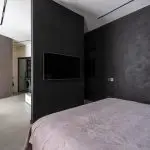The cost of velvet fabric per yard varies based on type, fiber content, weave, and where you source it. Silk velvet costs more for its luxury feel, while synthetic blends are budget-friendly but less soft. Pile density and weave also affect price, with cut pile being pricier. Imported velvet might save money but takes longer to arrive. You can save by hunting sales or buying remnants. Keep exploring to discover smart ways to select velvet that fits your budget and project.
Table of Contents
Key Takeaways
- Velvet type impacts price: crushed velvet is affordable; silk velvet commands the highest cost due to luxury and softness.
- Fiber content influences cost: natural fibers like silk and cotton are pricier than synthetic or blended velvets.
- Weave and pile density affect price, with cut pile and higher density velvets being more expensive.
- Domestic velvet usually costs more but offers faster shipping and better quality control compared to imported fabric.
- Budget by seeking remnants, shopping online sales, buying in bulk, or blending velvet with other fabrics to lower costs.
Understanding Velvet Fabric Types and Their Costs
Although velvet comes in various types, knowing their differences helps you choose the right fabric and budget accordingly.
Understanding velvet types ensures you select the perfect fabric and plan your budget wisely.
For example, crushed velvet features a textured, shiny surface and tends to be more affordable, making it ideal for casual projects. On the other hand, panne velvet, which has a highly reflective finish due to its pressed pile, usually costs a bit more because of its luxurious look.
Velour, often mistaken for velvet, is a knit fabric with a similar soft feel but generally comes at a lower price point.
Silk velvet, prized for its softness and richness, is typically the most expensive type.
How Fiber Content Influences Velvet Pricing
Since velvet can be made from a variety of fibers, the content directly affects its price and performance.
When you choose silk velvet, expect to pay a premium due to silk’s luxurious feel and natural sheen.
Cotton velvet offers durability and affordability, making it a budget-friendly option without sacrificing quality.
Synthetic fibers like polyester or nylon reduce costs further but might compromise softness and breathability.
Blended velvets combine fibers to balance price, texture, and durability, giving you more versatility.
Keep in mind, natural fibers usually cost more because of their sourcing and production processes.
The Impact of Velvet Weave and Pile on Price
Beyond fiber content, the way velvet is woven and the type of pile also play a big role in its price.
When you’re choosing velvet, keep in mind these key factors:
- Weave Type: Cut pile velvet offers a plush, soft texture but demands more labor, making it pricier than uncut or crushed velvet.
- Pile Density: Higher pile density means a richer feel and durability, which increases production costs and the final price.
- Pile Length: Longer piles create a luxurious look but require more material and careful weaving, pushing the price up.
Understanding these factors helps you make informed decisions without overspending.
Sourcing Velvet: Domestic vs. Imported Options
When you decide where to source velvet, choosing between domestic and imported options can greatly affect both cost and quality. Domestic velvet often offers faster shipping and easier communication, but imported velvet might provide more unique textures and competitive pricing. Your choice depends on your project’s priorities.
| Aspect | Domestic Velvet | Imported Velvet |
|---|---|---|
| Price | Generally higher | Often lower |
| Quality Control | Easier to verify locally | Varies by country |
| Lead Time | Shorter | Longer due to shipping |
Consider these factors carefully to balance budget constraints with your velvet fabric needs.
Market Trends Affecting Velvet Fabric Prices
Choosing between domestic and imported velvet sets the stage for understanding how broader market trends influence fabric prices.
You’ll notice that prices fluctuate based on several key factors, so staying informed helps you budget better.
For instance:
- Raw Material Costs: Changes in cotton or synthetic fiber prices directly impact velvet costs.
- Global Supply Chain: Disruptions or tariffs can increase import expenses and delay availability.
- Fashion Demand: When velvet becomes trendy, demand spikes, pushing prices higher.
Comparing Velvet Prices Across Different Retailers
How do velvet prices vary from one retailer to another?
When you shop for velvet fabric, you’ll notice significant price differences depending on the retailer’s sourcing, quality standards, and brand positioning. High-end fabric stores often charge more because they offer premium velvet blends or unique textures.
Online marketplaces might provide lower prices, but quality can fluctuate, so you’ll want to read reviews and check product details carefully.
Department stores tend to price velvet competitively, especially during sales, but their selection might be limited.
Specialty boutiques may focus on niche velvet types, commanding higher prices due to exclusivity.
To get the best value, you should compare prices per yard alongside fabric content and customer feedback. This way, you can find velvet that fits your budget without compromising quality.
Budget-Friendly Tips for Purchasing Velvet Fabric
Although velvet can be pricey, you don’t have to overspend to get quality fabric. By shopping smart, you can find beautiful velvet that fits your budget.
Start by exploring remnants or off-cuts at fabric stores; these smaller pieces are often sold at a discount. Don’t hesitate to check online marketplaces where sellers offer competitive prices and occasional sales.
Finally, consider blending velvet with other fabrics to reduce costs without sacrificing style.
Here are three budget-friendly tips to keep in mind:
- Hunt for clearance sales and seasonal discounts.
- Buy in bulk or combine orders with friends to access better prices.
- Opt for synthetic velvet, which mimics luxury at a fraction of the cost.
These strategies help you enjoy velvet’s elegance without breaking the bank.
Frequently Asked Questions
How Do I Properly Care for Velvet Fabric?
You should gently vacuum or brush velvet to remove dust, spot clean with mild detergent, and avoid harsh scrubbing. Always test a small area first, and consider professional cleaning to keep your velvet looking lush and vibrant.
Can Velvet Fabric Be Used for Upholstery?
Like sinking into a plush throne, you’ll find velvet perfect for upholstery. It adds luxury and warmth to any room, but be sure to choose durable, tightly woven velvet to withstand everyday use and spills.
What Are Common Uses for Velvet in Fashion?
You’ll find velvet often used in fashion for dresses, blazers, skirts, and evening wear. It adds luxury and texture, making your outfits stand out at special events or when you want a sophisticated, elegant look.
How Does Velvet Fabric Age Over Time?
Velvet ages with both charm and challenge—you’ll notice its plush texture softening while its pile may crush or fade. With proper care, though, it can keep its luxurious appeal, making your pieces timeless treasures.
Are There Eco-Friendly Velvet Fabric Options Available?
Yes, you can find eco-friendly velvet options made from organic cotton, bamboo, or recycled materials. These sustainable choices reduce environmental impact while still offering the luxurious feel you want for your projects.
- Why Open-Weave Scrim Is the Secret to Stunning Event and Canopy Designs - June 26, 2025
- Creating Large-Scale Art Installations With Scrim Fabric - June 26, 2025
- Scrim Fabric in Upholstery: Understanding Its Use as a Backing Material - June 26, 2025







